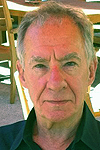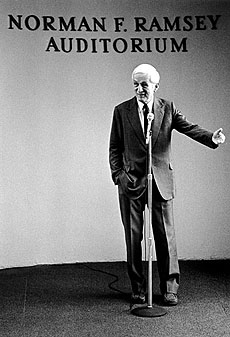URA celebrates 50 years
 |
|
Ezra Heitowit
|
Ezra Heitowit, URA vice president from 1986-2008, wrote this column.
As the Fermilab community prepares to celebrate the 50th anniversary of the founding of National Accelerator Laboratory, it is timely to recognize the establishment of Universities Research Association Inc. 50 years ago, in 1965.
URA, a consortium of leading research universities, has been involved in the management and operations of Fermilab throughout the entire history of the laboratory, first as the sole contracting organization starting in 1967, and since 2007 as a partner with the University of Chicago in Fermi Research Alliance LLC.
The determination to create a geographically representative, university-based management organization grew out of deliberations of a special panel appointed in late 1962 by high-level government advisory committees to assess the needs in high-energy accelerator physics. Chaired by physicist Norman Ramsey of Harvard University, the panel considered numerous proposals for new accelerator facilities in the range of 10-1,000 GeV. The leading recommendation in the panel's May 1963 report was the construction of a 200-GeV proton accelerator. The panel also recommended that "the larger accelerator installations should incorporate an administrative structure with national representation to assure that all proposals from qualified scientists be considered on equal footing."
The president of the National Academy of Sciences convened a meeting of 25 university presidents on Jan. 17, 1965. At this meeting it was decided to create a new organization, URA, and to offer its services to manage the proposed 200-GeV accelerator wherever it might be located. In June 1965, 34 university presidents met to establish URA as an organization with a Council of Presidents representing each of the member universities and a Board of Trustees actively responsible for the management of URA, including the responsibility to elect the corporation president and the laboratory director. On Nov. 7, 1965, the council elected its chair and vice chair and members of the URA Board of Trustees, which held its first meeting on Dec. 12, 1965. The board elected Norman Ramsey as URA president in July 1966. Ramsey served with distinction through 1973, the eventful period for the creation of Fermilab, and then served again for several terms from 1974 to 1981.
Over the years, URA's membership expanded to the current 89 universities, and its broad base was reflected in the explicit regional representation of the member universities on URA governing boards, along with at-large representatives from industry and the public interest. Robert Wilson and Leon Lederman were among the distinguished scientists who served on the first URA Board of Trustees and were later appointed as the first and second laboratory directors, respectively.
For more complete details, I recommend "The Early History of URA and Fermilab," Ramsey's historical retrospective, which is available in the Fermilab archives. You can also view his 1967 URA Annual Report.
 |
Norman Ramsey speaks at the dedication of Ramsey Auditorium on Oct. 1, 1981. Photo: Fermilab |
|